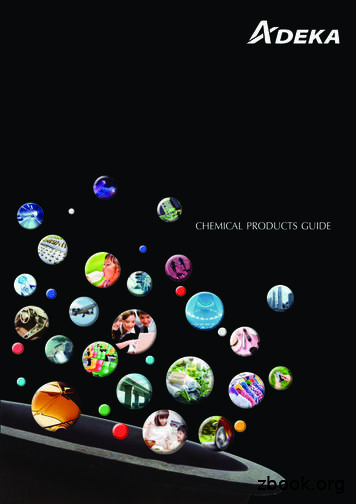Unit – 2 Semiconductor Devices
Unit – 2Semiconductor DevicesLecture 2.1Overview of Semiconductors
Introduction Electronics Study of passage of charged particles in vacuum or gas or semiconductor. Applications Rectification, amplification, power generation, industrial controlPhoto electricity, communicationConsumer electronics, control and industrial electronicsCommunication and broadcasting, biomedical equipmentCalculator, computer, microprocessorAerospace and defense equipment and components.
Semiconductor Theory Based on conductivity Conductors Semiconductors Insulators Based on number of valence electrons (electrons in outermost orbitof an atom) Good conductor 1 or 2 valence electrons, Ex. Copper. Semiconductor partially filled orbit; 4 valence electrons, Ex. Germanium,silicon. Insulator completely filled orbit, Ex. Xenon.
Energy Band Structure Range of energies that an electron may possess in an atom.1. Valence band Energy possessed by valence electrons.2. Conduction band Energy possessed by valence electrons (free electrons) loosely attached tonucleus. Free electrons responsible for conduction of current.3. Forbidden band Energy band between conduction band & valence band.
Energy Band Structure
Classification based on energy band Conductor Valence band & conduction band overlap Smaller excitation (electric field) can cause free electrons to constitute current. Insulator Forbidden energy gap is very large. All the electrons are in valence band; conduction band is empty. Semiconductor Valence band is partially filled. Small electric field is sufficient to push the valence band electron to conductionband. As temperature increases, crossover of electrons increases conductivity increases.
Classification of Semiconductors Intrinsic semiconductors. Extrinsic semiconductors. N – type. P – type.
Intrinsic Semiconductors Pure semiconductor. At room temperature, free electrons move from VB to CB. Missing e- in VB forms hole (vacant space) contribute to electroncurrent. At room temperature electron-hole pairs are created. Total current (current due to e-) (current due to holes)
Extrinsic Semiconductors Intrinsic semiconductors have poor conduction at room temperature. Small amount of impurity is added to the intrinsic semiconductor forincreasing conductivity DOPING. 1 to 2 atoms in 10 6 intrinsic atoms. Two types – depending on nature of dopant. N – type P – type
N – type Extrinsic Semiconductor Penta valent impurity DONOR. Ex. Arsenic, antimony, phosphorous, etc. Each penta valent atom forms four covalent bonds with semiconductoratom. The fifth e- (one conducting electron without creating hole) is free to movefrom VB to CB easily. Donor gives one e- and becomes positive ion. Conductivity is due to electrons. Majority carriers electrons. Minority carriers holes.
P – type Extrinsic Semiconductor Trivalent impurity ACCEPTOR. Ex. , boron, etc. Forms only 3 covalent bonds, and 1 incomplete covalent bond leadingto the creation of a hole. Accepts free e- and becomes negative ion. Conductivity is due to holes. Majority carriers holes. Minority carriers electrons.
Difference between N-type and P-type semiconductors
Extrinsic Semiconductors Intrinsic semiconductors have poor conduction at room temperature. Small amount of impurity is added to the intrinsic semiconductor for increasing conductivity DOPING. 1 to 2 atoms in 10 6 intrinsic atoms. Tw
ADEKA SUPER TEOS PRODUCT NAME Si(OC 2H5)4 CHEMICAL FORMULA APPLICATION Dielectric film/Semiconductor ADEKA HIGH-PURITY TEOP PO(OC 2H5)3 Dopant/Semiconductor ADEKA HIGH-PURITY TEB B(OC 2H5)3 Dopant/Semiconductor ADEKA HIGH-PURITY TiCl4 TiCl4 Electrode/Semiconductor ADEKA SUPER TMA Al(CH 3)3 High-k material/Semiconductor ADEKA ORCERA TDMAH Hf[N(CH 3)2]4 High-k material/Semiconductor
Certain semiconductor devices which differ from the semiconductor devices of heading 8541 in that their functioning is based on temperature, pressure, etc. are excluded from this heading. E.N. 85.41 (A) lists non-linear semiconductor resistors, such as thermistors, varistors, and magneto-resistors as examples. These devices are
basics of semiconductor devices. However, the book does not draw on the student’s knowledge of circuits and can thus be used as a first course in semiconductor devices. Given that the presentation is a bit briefer than most semiconductor device texts on the fundamentals, the book is
Book by the same author on Devices but including semiconductor physics & processing. U. K. Mishra& J. Singh, Semiconductor Device Physics and Design E-book available on line thru UT Lib. Karl Hess, Advanced Theory of Semiconductor Devices
AUK Semiconductor Corp. Aura Vision Aureal Aurora Systems Austin Semiconductor Austria Mikro Systeme International Avance Logic Avantek Averlogic . Performance Semiconductor Pericom Semiconductor PhaseLink Laboratories Philips Photobit PLX Technology PMC-Sierra Power A
However, the semiconductor body can alternatively be of Si or of a high-bandgap com-pound semiconductor material like Ga 2O3 or GaN. [0019] According to atl east one embodiment, the pow-er semiconductor device is a field-effect transistor or an insulated gate bipolar transistor, IGBT for short. For ex-ample, the power semiconductor device .
ELECTRONIC DEVICES - I 1. Energy Bands in Solids 2. Energy Band Diagram 3. Metals, Semiconductors and Insulators 4. Intrinsic Semiconductor 5. Electrons and Holes 6. Doping of a Semiconductor 7. Extrinsic Semiconductor 8. N-type and P-type Semiconductor 9. Carrier Concentration in Semiconductors 10.Distinction between Intrinsic and Extrinsic .
A physical understanding of how semiconductor devices work can be conveyed without going too deeply into semiconductor physics, but a basic understanding of some key concepts at the level of an introductory course in solid state physics or semiconductor devices is necessary. This lecture and the next will summarize a few essential concepts.























